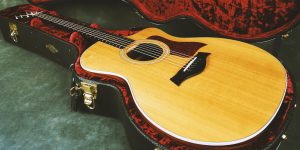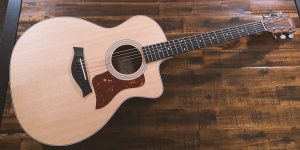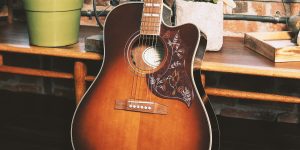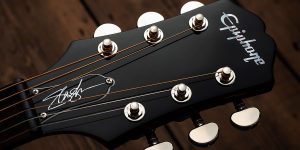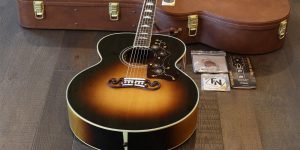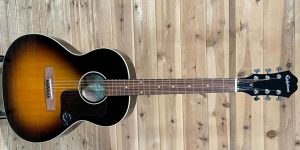Even the highest quality musical instruments (including guitars) are subject to various external influences. Over time, grime, dirt, and debris accumulate on the fretboard. In order to maintain the instrument’s playability and tonal quality and ensure a long and harmonious partnership between musician and guitar, cleaning the guitar fretboard is the number one task every guitarist should master.
In this guide, I will explain how to clean a guitar fretboard, what tools you may require, techniques to use while cleaning, and tips that will help you keep your instrument in pristine condition and allow your music to flow freely from your fingertips to the strings.
The essential tools for fretboard cleaning
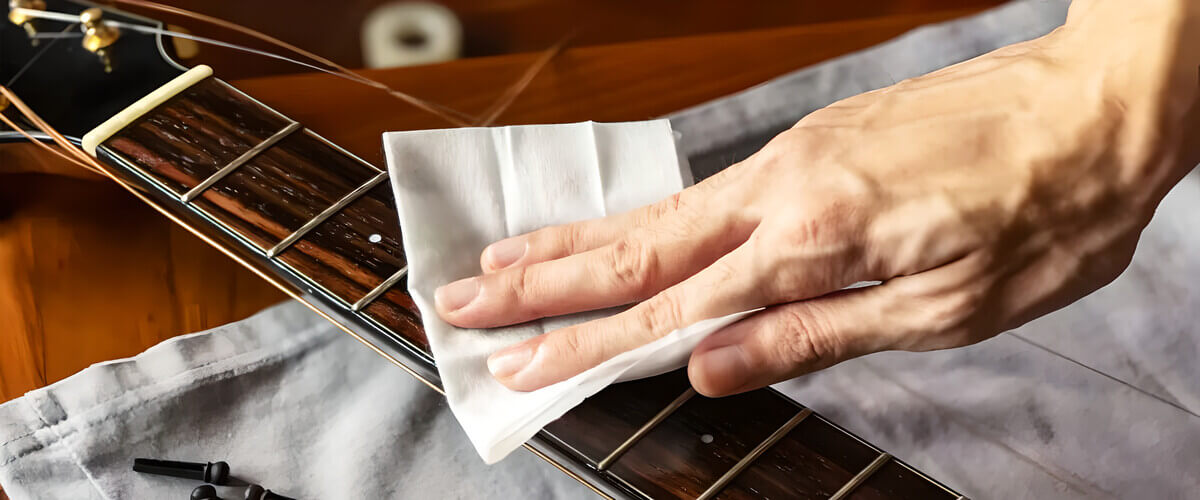
Cleaning your guitar’s fretboard requires a few essential tools to ensure a thorough and effective process. I usually use the following:
- Soft lint-free cloth. A microfiber or flannel cloth is essential for wiping down the fretboard. It should be clean and free of any loose fibers that could get caught in the frets.
- Guitar polish or lemon oil. Lemon oil is commonly used for rosewood and ebony fretboards, while a guitar polish is suitable for most other types of fretboards. Make sure to choose a high-quality product designed for use on guitars.
- A toothbrush or soft bristle brush. They are helpful for gently scrubbing away dirt and grime from between the frets and along the fretboard.
- Fretboard guards (optional). These are small strips of material (often rubber or plastic) that fit over the frets to protect them while you clean the fretboard.
- Steel wool (optional). For stubborn dirt or grime buildup on the frets or fretboard, very fine steel wool (0000 grade) can be used sparingly. Be cautious when using steel wool, as it can scratch the finish.
- A small screwdriver or Allen key. You may need it to remove the strings if you want to perform a more thorough cleaning, including cleaning underneath them.
- String winder and cutter. Having a string winder and cutter on hand is practical for removing and replacing strings, allowing you to access and clean the fretboard more easily.
- Tape. It can be used to protect the guitar’s body and finish from accidental contact with cleaning agents or steel wool during the cleaning process.
Step-by-step guide
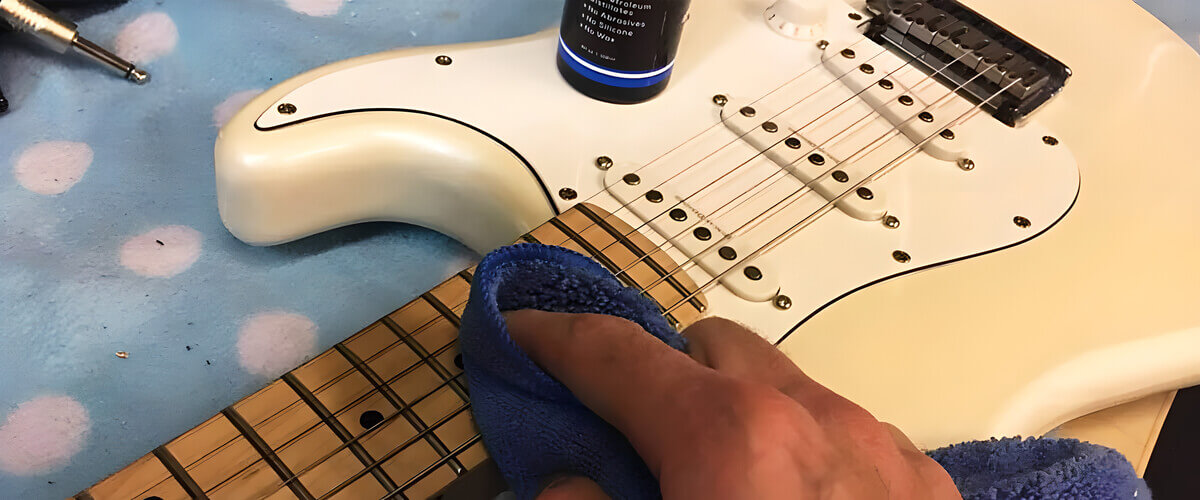
Cleaning guitar fretboard is a straightforward process, which is nonetheless an essential part of guitar maintenance. Follow my step-by-step instructions to clean your dirty fretboard effectively.
Step 1: Prepare tools and materials
I’ve already described what you might need above, so make sure it’s ready to use.
Step 2: Loosen or remove the strings
This step is optional but allows you better access to the entire fretboard. Use your string winder and cutter to make this process easier.
Step 3: Protect the guitar body
Use masking or painter’s tape to protect the guitar’s body, including the finish and pickups. Cover the entire body, leaving only the fretboard exposed.
Step 4: Clean the fretboard surface
Begin with a soft, lint-free cloth to wipe down the entire fretboard surface. This will remove surface dust and loose dirt.
Step 5: Apply fretboard cleaner
Be cautious not to use too much; a few drops will be enough.
Step 6: Gently scrub the fretboard
Use a soft-bristle toothbrush or a special fretboard brush to gently scrub the fretboard, paying attention to the areas around the frets. This will help to clean fretboard grime that has accumulated in the fret slots and between them. Avoid excessive pressure.
Step 7: Clean the frets (optional)
If your frets have buildup, you can use very fine steel wool (0000 grade) to polish them. Be extremely gentle and always follow the direction of the frets.
Step 8: Wipe off excess cleaner
After scrubbing, use your lint-free cloth to wipe off any excess cleaner or oil from the fretboard. Ensure the fretboard is clean and free of residue.
Step 9: Reattach and tighten strings
If you removed the strings, reattach or tighten them to their proper tension. Be sure to tune your guitar correctly.
Step 10: Final inspection
Carefully remove the tape, being mindful not to damage the finish. Inspect your fretboard to ensure it’s clean and free of residue or dirt. Play a few notes to ensure the fretboard feels smooth and comfortable.
Maintenance tips for a pristine fretboard

As you may have realized by now, maintaining a clean fretboard on the guitar is essential for the playability and longevity of your guitar. Here is how you can keep your fretboard in excellent condition.
Regular cleaning. Wipe down your fretboard after every playing session with a soft, lint-free cloth to remove sweat, dirt, and oils from your fingers. Don’t forget to clean the guitar neck as well. This simple step can prevent buildup and maintain a clean fretboard.
Avoid excessive moisture. After playing, make sure your hands are dry and clean. Avoid exposing your guitar to extreme humidity or dryness, as this can cause fretboard issues.
String maintenance. Change your strings regularly to prevent the buildup of dirt and grime. Old strings can transfer debris to the fretboard and affect playability.
Store your guitar properly. When not in use, store the guitar in a suitable case or gig bag to protect it from dust and environmental factors such as direct sunlight. If you live in a dry climate, use a guitar humidifier to maintain the optimal humidity level for it. Dry conditions can cause fretboards to shrink and potentially lead to fret sprouts.
Professional setup and maintenance. Consider getting your guitar professionally set up and maintained by a qualified technician regularly. They can check and adjust the neck relief, action, and intonation, which can impact the fretboard’s condition.


